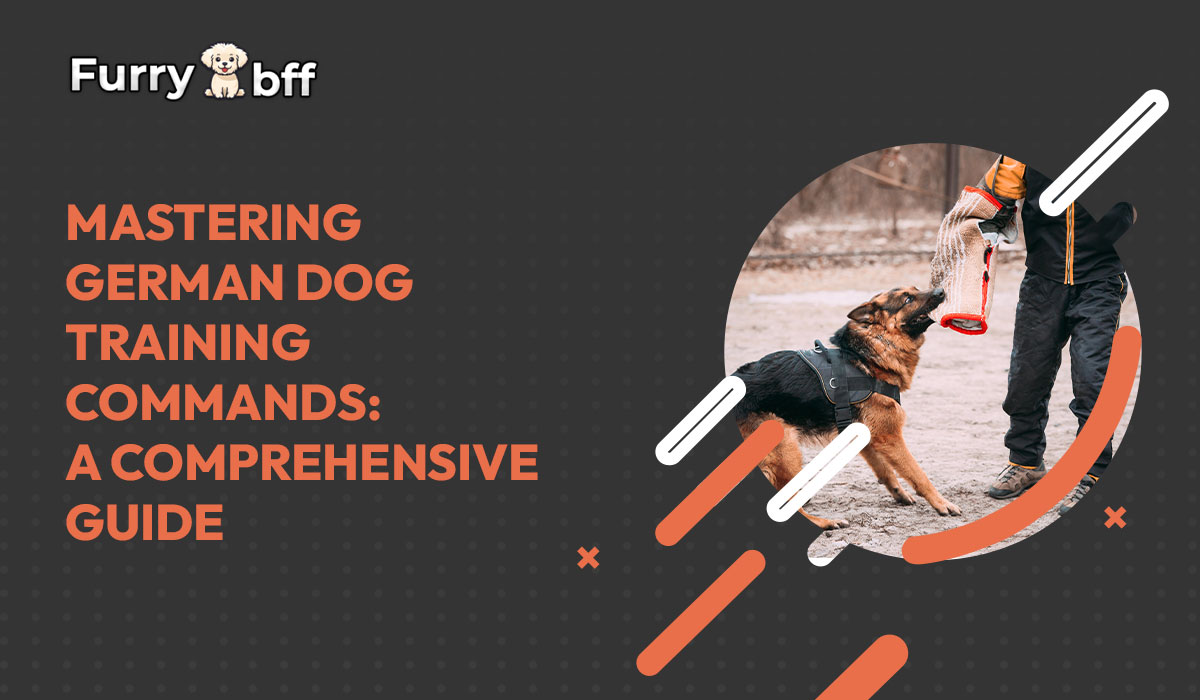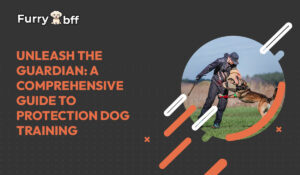German dog training commands have become increasingly popular due, to their effectiveness and clarity. Whether you’re teaching obedience or advanced tricks incorporating commands can establish a strong connection between you and your furry companion. In this blog post, we will explore the world of dog training commands discussing their advantages providing a list of commands and offering helpful tips for successful dog training.
The Benefits of Using German Dog Training Commands
1. Communication;
German commands are easily distinguishable and less likely to be misunderstood by your dog ensuring communication and faster learning.
2. Consistency;
Consistency is crucial in dog training. By using commands you can avoid confusion and reinforce the desired behaviors effectively.
3. Universal Language;
Trainers and dog owners worldwide widely use German commands, creating a language for your dogs training that transcends borders.
Essential German Dog Training Commands;
1. Sitz (Sit);
Teaching your dog to sit on command is the foundation of obedience training. This command proves helpful in situations.
2. Platz (Down);
“Platz” instructs your dog to lie. This command helps regulate your friends energy levels and aids in maintaining focus during training sessions.
By incorporating these commands into your training regimen you’ll establish clear communication, with your canine companion while building a stronger bond based on trust and understanding.
Come;
Teaching your companion to respond when called is vital for their safety and your ability to manage them, especially when off-leash.
Stay;
The command “stay” instructs your dog to remain in one place until given permission to move. This command is crucial for preventing behavior and ensuring their safety.
Here;
Like the “come” command “here” emphasizes the importance of your dog returning promptly by your side. It proves helpful in maintaining control during walks or other activities.
Drop/Release;
The word “aus” teaches your dog to let go of whatever they have in their mouth promoting safety and discouraging chewing behaviors.
Heel;
By using the command “fuss ” you can guide your dog to walk beside you making walks more enjoyable and controlled.
Fetch;
The command “bring” adds a touch of fun as it encourages your dog to retrieve an object and bring it back to you.
Tips for Successful Training;
Positive Reinforcement; Use treats, praise, and affection, as rewards when your dog correctly follows commands.
Short Training Sessions; Keep training sessions brief. Focused so that your canine companion doesn’t become bored or overwhelmed.
Consistency; Maintain consistency by using the tone of voice and hand signals for each command. This helps reinforce understanding and obedience. Teach One Command at a Time; Introduce one command at a time and ensure your dog understands it entirely before moving on to the next.
Be Patient; Training requires time and patience. Be patient and understanding of your dogs progress.
Timing is Key; Give commands at the moment preferably just before your dog is about to perform the desired action.
Stay Positive; Keep training sessions positive and enjoyable, for your dog. Avoid punishment. Getting frustrated.
Regular Practice; Consistent practice reinforces learned commands. It helps your dog retain their skills.
Important Aspects
Clear and Distinct Commands; German commands are known for their clarity and distinctiveness in sound. Choose commands that are easy for your dog to differentiate from words.
Consistency Matters; Consistency in tone of voice and specific words used for commands is crucial. This prevents confusion and reinforces learned behaviors.
Optimal Training Environment; Select a distraction-free environment for training sessions allowing your dog to focus on learning the commands.
Positive Reinforcement; Use treats, praise, and affection as rewards to reinforce responses, to the commands from your friend positively.
Short-Focused Sessions; Keep training sessions brief yet focused to maintain your dogs engagement while preventing boredom.
Step 1; Start with commands when training your dog and gradually introduce advanced ones as they become more proficient.
Step 2; It’s essential to be patient, throughout the training process and avoid getting frustrated with your dog’s progress.
Step 3; Focus on teaching one command before moving on to the next. This helps prevent confusion and ensures that your dog understands each command.
Step 4; To reinforce the association between commands and desired behaviors deliver the commands just before your dog is likely to perform the action.
Step 5; Create an atmosphere during training by using a tone and rewarding your dog whenever they respond correctly to a command.
Step 6; Consistent practice is key. Regularly practicing reinforces learned behaviors. It helps your dog remember and respond to the commands effectively.
Step 7; Be adaptable in your approach considering your dog’s learning pace and unique needs when using German commands.
By considering these factors you can successfully incorporate German dog training commands into your routine while ensuring a learning experience, for your furry friend.
Benefits of this type of training;
Using German dog training commands brings advantages that contribute to communication and successful training with your beloved four-legged companion. Here are some key advantages;
Clarity and Uniqueness; German commands are often different, from language which helps prevent confusion for your dog. This clear distinction lets your dog understand when you usually communicate versus giving training cues.
Quick Learning; The distinct sound of commands can help your dog comprehend and learn faster. This efficiency is beneficial when teaching behaviors and commands.
Consistent Communication; By using a set of commands you establish a standardized language for training your dog. This consistency improves communication. It makes it easier for your dog to understand what you expect from them.
Universal Understanding; German commands are. Used by trainers and owners worldwide. This universality means that your dog can understand and follow commands from people creating an experience in various environments.
Clear Expectations; When you use commands you provide expectations for your dogs behavior. This clarity reduces confusion and helps them know what is expected of them.
Bonding; Training with commands requires active communication and interaction, between you and your dog. This interaction strengthens the bond you share fostering a connection.
Focused Attention; The unique sounds of commands capture your dogs attention making them more focused and engaged during training sessions.
Advantages of Using Commands for Dog Training
Obedience; German commands have a unique quality that encourages faster responses and greater compliance from your dog leading to better obedience.
Versatility; You can utilize commands for aspects of dog training including basic obedience, advanced tricks, and specialized tasks. It provides a language, for training your friend.
Mental Stimulation and Challenge; Learning and responding to commands can mentally stimulate your dog keeping their mind active and engaged.
Impressive Skills; Teaching your dog commands in a language like German can be quite impressive and entertaining for you and others. It showcases the intelligence of your canine companion as your dedication to their training.
Effective Communication: dog training commands enable you to communicate effectively with your four buddies. This creates a relationship based on understanding and mutual respect.
Conclusion
To sum it up the benefits of incorporating dog training commands include learning, clear communication, improved obedience, and a stronger bond between you and your beloved pet. By integrating these commands into your training routine you’re setting the stage for interactions filled with joy, alongside your companion.









